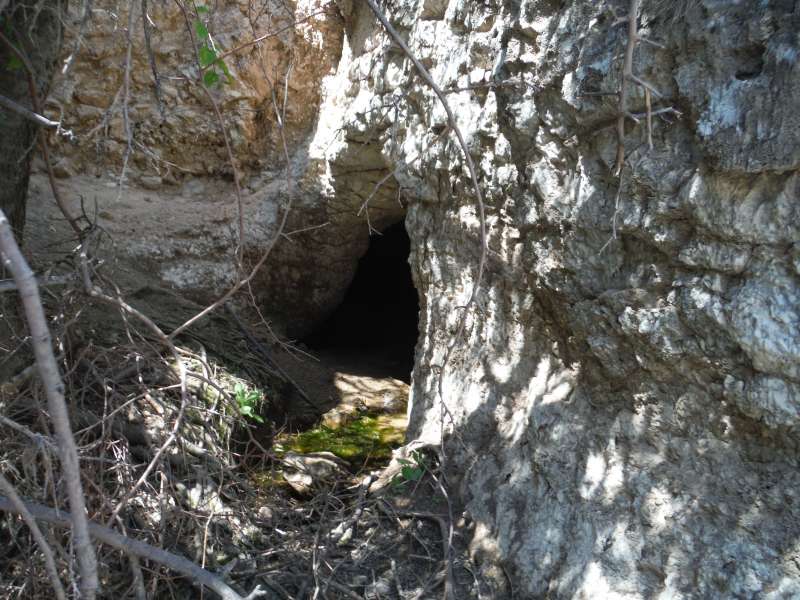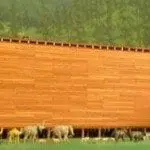During a somewhat intense moment swimming through the deep frigid waters of a dark cave, I noticed the rotten-egg smell of sulfur. I couldn’t help but think of what that sulfur I smelled might indicate about the formation of this cave, even as I worked through this difficult passage. In the past few weeks I’ve written quite a bit about Park’s Ranch Cave and my recent experiences there – I told the story of my experience going through this cave in “Through Deep Waters – Caving Adventure”; we talked about the basic landscape and geology of the region in “Park’s Ranch Cave – Part 1”; we discussed how this cave might have formed and what it has to do with the Biblical global flood in “Park’s Ranch Cave – Part 2”. There’s a little more to the science surrounding Park’s Ranch, and caves in general, that I’d like us to explore before we leave this adventure behind us.
Previously, I explained how Park’s Ranch Cave and the surrounding area is part of karst landscape, which is essentially a natural drainage system that has many features caused by the dissolving of certain types of rocks. Karst features are all about the draining of water off land surfaces; caves, sinkholes, and many other smaller features (called “karren”) are all evidence of a karst landscape. Many geologists who believe earth to be billions of years old will point to “paleokarsts” as evidence that long periods of time passed between rock layers – rock layers that are generally better explained by a catastrophic global flood. They like the idea of various fossil karst features that would have taken long time periods to be slowly formed by being dissolved by water draining over many years.
There are several big problems with these “paleokarsts” that make them all quite questionable when you look a little closer. Let’s look at one karst feature in particular – dolines. A doline is a shallow dent in the ground that is usually funnel-shaped and is usually formed when limestone dissolves in a karst landscape. Evidence for one supposed “paleokarst” in the “Gonnesa Formation” includes features that look like our modern dolines. However, there isn’t enough other evidence for a karst in this area, and the doline-like formations are found in several parts throughout a layer that is not interrupted with other erosion – that’s a big problem for a landscape that should form all those features closer to the same level.

While there are many other problems with rock features that are thought to be part of a “paleokarst” the gist of it is that there isn’t enough evidence to support the idea of a draining landscape. Even if there were more evidence, a true ancient karst formation would not be preserved because close to the surface it would get changed by modern water drainage, and lower down the heat and pressure would ruin the signs of a karst beyond recognition. Most of these fishy “paleokarsts” probably aren’t genuine karst formations.
You may be wondering what made these formations, like the ones that look similar to dolines, if not draining waters of a karst landscape. The science involved in the Biblical global flood holds a much more clear explanation for these features. Many of the formations thought to be “paleokarst” features are better explained as being formed by gasses and water seeping out of surrounding layers during and shortly after the flood while the layers were still fairly soft. In Park’s Ranch Cave, I smelled sulfur. The oil in the layers in the area below Park’s Ranch would have seeped out certain gasses containing sulfur. Those gasses would have significantly helped carve out Park’s Ranch Cave. Karst formations and caves can get pretty complex, but the Bible has the key to the most logical scientific explanation: the global flood. Our lives can get pretty complex and confusing too – when in doubt, go back to the Bible, read it simply as written and apply it.
Copyright Sara J. Bruegel, September 2015
References:
- Emil Silvestru. “The Riddle of the Paleokarst Solved”. Journal of Creation, 15 (3): pg. 105-114. December 2001. Creation Ministries International. Last accessed 9-11-2015. http://creation.com/the-riddle-of-paleokarst-solved
- “THE GYPSUM KARST PLAIN AND THE CASTILE FORMATION” by Jason M. Richards. Canyons & Caves. Issue No. 22 – Autumn 2001, Newsletter from the Resources. Stewardship & Science Division. Carlsbad Caverns National Park http://www.nps.gov/cave/planyourvisit/upload/c&c22.pdf
- Steve Austin. 1980. Origin of Limestone Caves. Acts & Facts. 9 (1). http://www.icr.org/article/origin-limestone-caves
- Kevin W. Stafford. “Evaporite Karst and Hydrogeology of the Castile Formation: Culberson County, Texas and Eddy County, New Mexico”. Pg 123-131. 2013. 13th Sinkhole Conference, NCKRI Symposium 2. Department of Geology, Stephen F. Austin Sate University. Nacogdoches, Texas. Last accessed 9-11-15: http://scholarcommons.usf.edu/cgi/viewcontent.cgi?article=1120&context=sinkhole_2013





